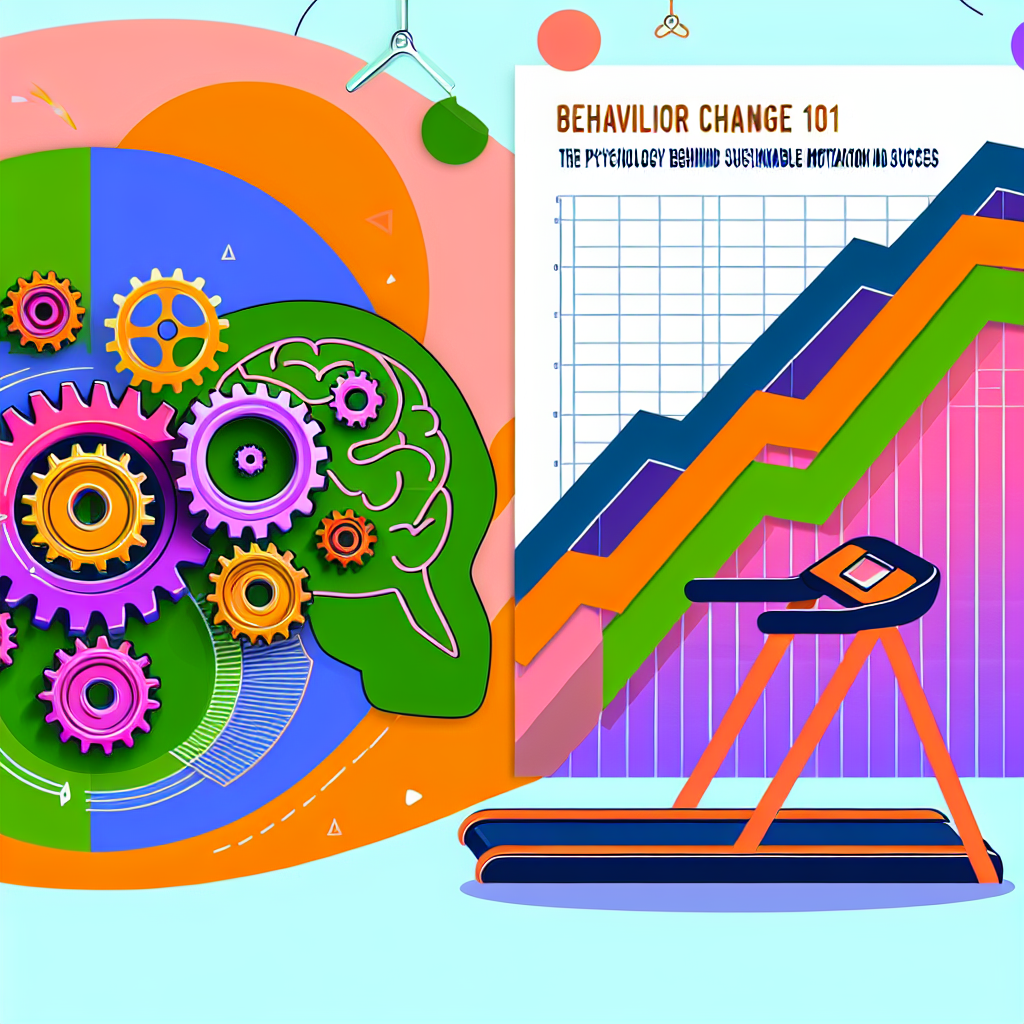
Behavior Change 101: The Essential Psychology Behind Sustainable Motivation and Success
Introduction
Imagine waking up every morning filled with purpose and energy, ready to tackle your goals with unwavering determination. This compelling vision of personal transformation is not just a fantasy; it’s a realistic aspiration that can be achieved through a deeper understanding of behavior change. Behavior Change 101: The Psychology Behind Sustainable Motivation and Success explores not only why we struggle to make lasting changes in our lives, but also presents actionable insights based on psychological principles that can help transform intention into action.
In an age dominated by quick fixes and instant gratification, understanding the mechanics of behavior change offers a beacon of hope. When you align your motivation with your behaviors and enable productive habits, you create a sustainable path toward success. This guide takes you through the essentials of behavior change, embedding powerful psychological tactics that can turn fleeting motivation into a lasting lifestyle.
Understanding Behavior Change
What is Behavior Change?
Behavior change refers to a process that involves transforming a specific behavior into a desired behavior — whether it concerns health, productivity, or personal growth. This process is influenced by motivational, emotional, and psychological factors. Below, we outline the pivotal components that are essential to grasping the foundational elements of behavior change.
| Component | Description |
|---|---|
| Motivation | The internal or external drive to pursue a goal |
| Cues | Triggers that prompt behavior |
| Routine & Habits | Consistent actions performed in response to cues |
| Rewards | Positive reinforcement that promotes repetition |
The Psychology Behind Behavior Change
Understanding the psychological theories that underlie behavior change is crucial in Behavior Change 101: The Psychology Behind Sustainable Motivation and Success. Three key theories offer insights into why individuals act the way they do:
The Transtheoretical Model (Stages of Change): This model outlines five stages people go through when changing behavior — Precontemplation, Contemplation, Preparation, Action, and Maintenance. Recognizing your stage can help tailor your strategy for change.
Self-Determination Theory (SDT): SDT emphasizes intrinsic motivation — doing something for its inherent satisfaction rather than for some separable consequence. According to this theory, fostering autonomy, competence, and relatedness is essential for sustainable motivation.
- The Fogg Behavior Model: Developed by Dr. BJ Fogg, this model suggests that behavior happens when motivation, ability, and a prompt converge at the same time. This synergy creates the conditions necessary for a behavioral shift.
Real-World Applications: Case Studies
Behavior change is not just theoretical; it has practical implications that can lead to transformative results. Below are three case studies that successfully illustrate how the principles of Behavior Change 101: The Psychology Behind Sustainable Motivation and Success can be optimized in real life.
Case Study 1: The Power of Small Changes
Scenario:
A health coach implemented the "10-Minute Rule" with a group of clients looking to integrate exercise into their routines. Instead of demanding an hour of workout, clients were encouraged to commit to just 10 minutes.
Analysis:
This case exemplifies the Fogg Behavior Model. The small commitment made it easy (high ability) while also triggering motivation through the sense of accomplishment gained after completing even a short workout. Participants eventually increased their workout duration as they cultivated a routine, supporting the principles of habit formation.
Case Study 2: Intrinsic Motivation in Education
Scenario:
A high school implemented a project-based learning curriculum, allowing students to choose their project topics, fostering a sense of ownership over their learning.
Analysis:
By aligning with Self-Determination Theory, students reported increased engagement and motivation. The intrinsic interest in their chosen topics cultivated a love for learning and led to higher overall academic performance.
Case Study 3: Workplace Culture Shift
Scenario:
A tech company adopted a policy that encouraged "30-Minute Check-Ins" between employees and managers, promoting dialogue about personal goals and team productivity.
Analysis:
This example leverages the Transtheoretical Model by facilitating conversations that assist employees throughout various stages of readiness to change. It empowered individuals to reflect on their workplace behaviors, leading to improved team cohesion and outcomes.
Practical Steps to Sustainable Motivation
To harness the concept of Behavior Change 101: The Psychology Behind Sustainable Motivation and Success, consider these actionable steps:
Set SMART Goals: Specific, Measurable, Achievable, Relevant, and Time-bound goals provide clarity and direction.
Identify Triggers: Understand the cues that lead to your current behaviors and plan new triggers that encourage the desired change.
Create a Supportive Environment: Surround yourself with motivating elements—positive affirmations, encouraging peers, and inspiring literature.
Practice Self-Compassion: Understand that setbacks are part of the process. Cultivating a compassionate mindset can help you bounce back quicker.
- Celebrate Progress: Recognize small victories. Celebrating milestones reinforces positive behavior and strengthens motivation.
FAQs About Behavior Change
1. What is the most effective way to initiate behavior change?
The foundation of effective behavior change starts with understanding your motivation and setting clear goals using the SMART criteria. Identifying triggers and crafting a supportive environment can also significantly enhance your chances of success.
2. How long does it take to change a habit?
While common belief suggests it takes 21 days, research indicates that the timeframe for habit change can range between 18 to 254 days. It largely depends on the individual and the behavior being altered.
3. Can motivation be sustained over time?
Yes, it can, especially when intrinsic motivation is prioritized. Fostering a growth mindset and engaging in activities that align with your values can help sustain motivation.
4. What role does accountability play in behavior change?
Accountability reinforces commitment and encourages progress. Sharing goals with others, whether through a support group or partnerships, can amplify your motivation and persistence.
5. How do I overcome setbacks during the change process?
Acknowledging setbacks is crucial. Instead of viewing them as failures, treat them as learning opportunities. Reassess your strategies and remember to practice self-compassion throughout the journey.
Conclusion
In the quest for sustainable motivation and success, understanding the mechanics of behavior change is vital. Behavior Change 101: The Psychology Behind Sustainable Motivation and Success not only illuminates why change is often difficult but also provides comprehensive strategies that can make it achievable.
Transforming the way you think about behavior, embracing the principles from psychology, and applying practical strategies in your daily life can create a roadmap for enduring change. Now is the time to take control of your behavior, align your motivations with your goals, and embark on this empowering journey of self-transformation.
Embrace the possibility, take the leap, and watch as your life evolves toward the best version of yourself. The path to change is not devoid of challenges, but with the right practices, it can culminate in profound success and fulfillment.

















